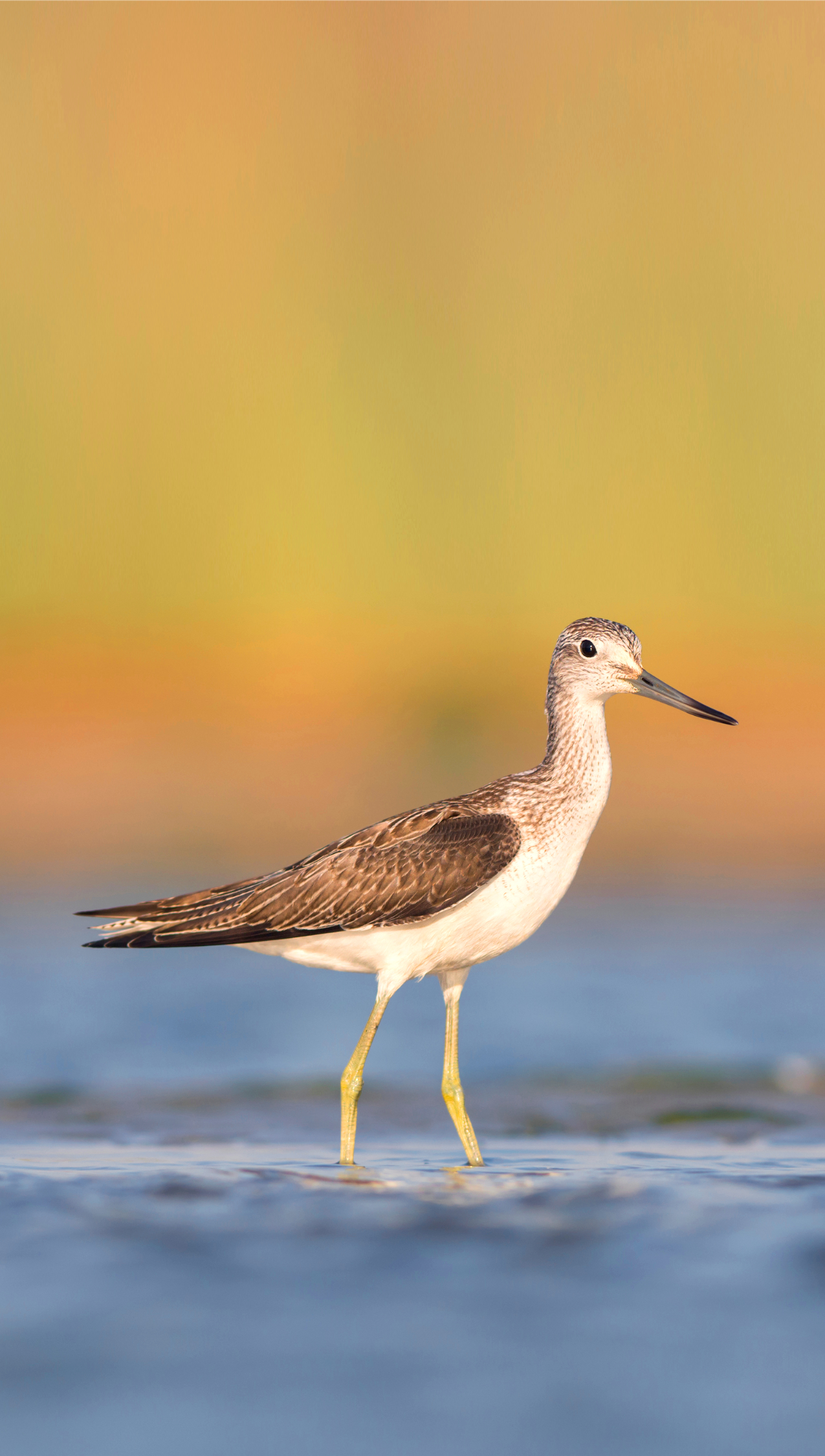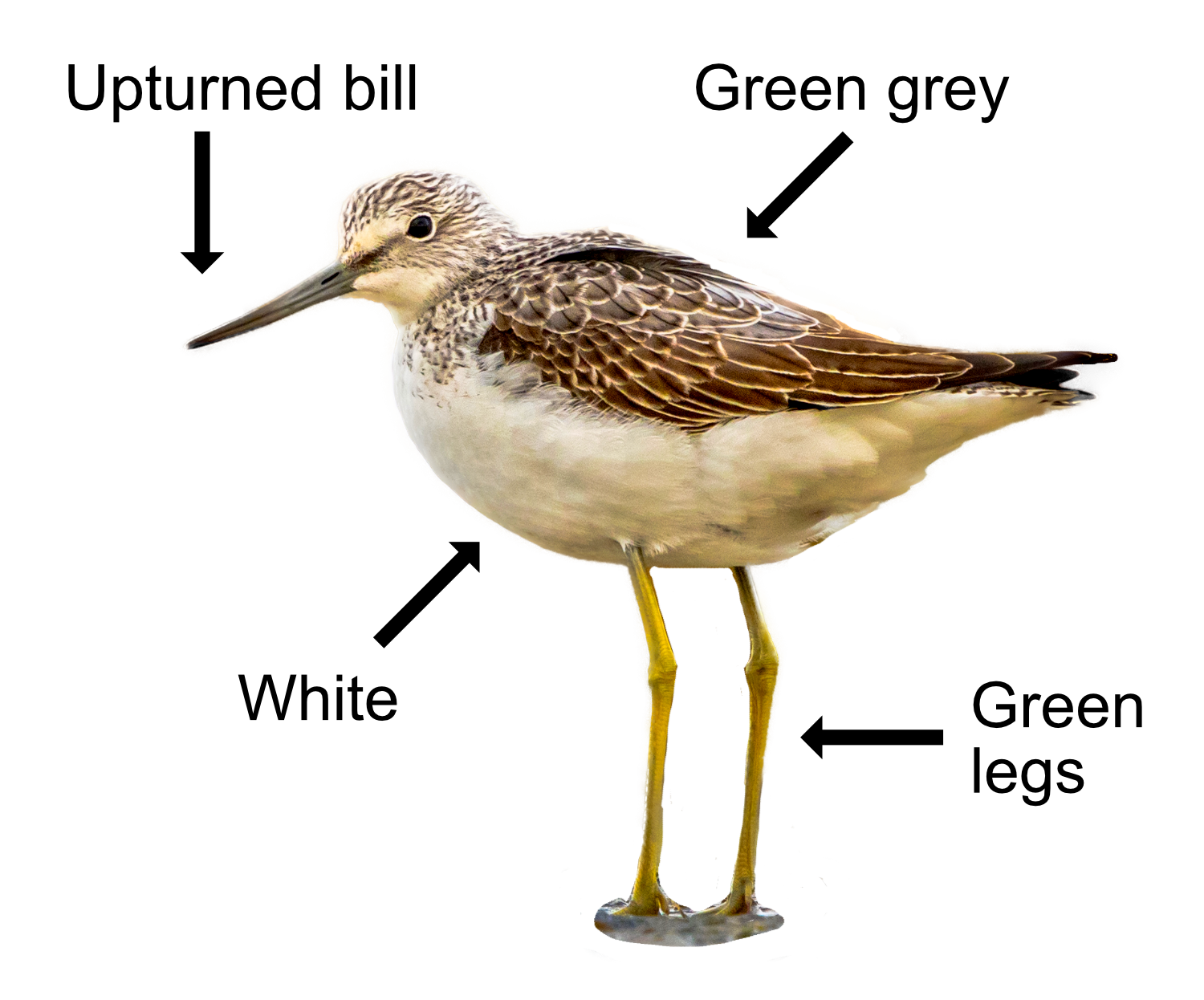
The Greenshank is a tall, elegant wader, usually seen singly or in small groups on the edges of lakes, rivers, reservoirs, estuaries and coastal marshes. Greenshank means 'green legs' where 'shank' is an old word for leg (as in the phrase 'going on shank's pony' for walking). It is a summer visitor usually found on moors and bogs in Scotland, but during migration you can often see them on lakes, reservoirs and coastal wetlands.

They have an upright stance with a green-grey back, a white breast, white underparts that become spotted in summer and, of course, green legs. Their bill is long, dark, and slightly upturned, which can help to distinguish it from other waders. They have plain grey wings and a white 'V' on their back and rump, which is visible when they do their rapid, twisty flying. Their flight call is a ringing, triple note "tew-tew-tew", similar in sound to a Redshank but with each note being identical.
The Greenshank feeds in shallow waters by probing wet mud, using a prod-walk-prod action, or sweeping its bill from side to side. It eats crustaceans, insects, worms and small fish.
Greenshank nesting begins in late April. The male makes several scrapes on the open, wild moorland ground, proclaiming his territory with a song flight by flying to a great height before 'tumbling' down to the ground. Miss ‘picky’ female then chooses one she likes and lays 4 eggs which hatch after 24 days. The youngsters can feed themselves, while both parents care for them, and can fly 25 days later. Mum often leaves first in June, ahead of dad and the rest of the family who set off in August. Some Northern European birds will overwinter on the south coast of Britain, though the majority go to Africa.
About 1,000 Greenshanks breed in Scotland, though their moorland breeding areas are threatened by forestry tree planting schemes, grouse shooting and other leisure activities. They are consequently Amber listed. The oldest known Greenshank was 11 years old.
Their Latin name is 'tringa nebularia' where 'tringa' is from the Ancient Greek 'trungas' for a thrush-sized, white-rumped, tail-bobbing wading bird mentioned by Aristotle and 'nebularia' is from the Latin 'nebula' for 'mist'. A misty, white-rumped wading bird. I suppose the white 'V' on its rear and its grey colour sort of fits. In Norwegian, the Greenshank is called 'Skoddefoll' from its habit of loving damp marshy places.